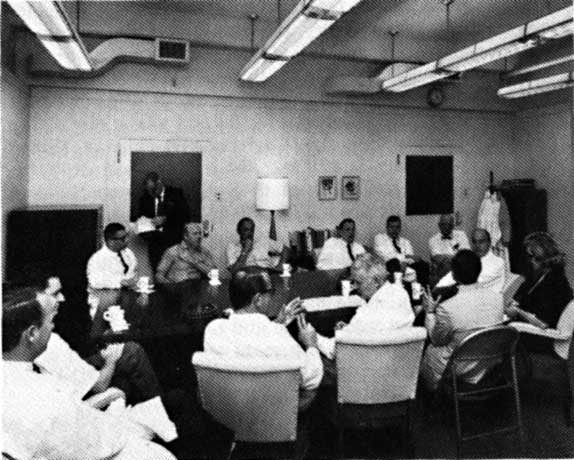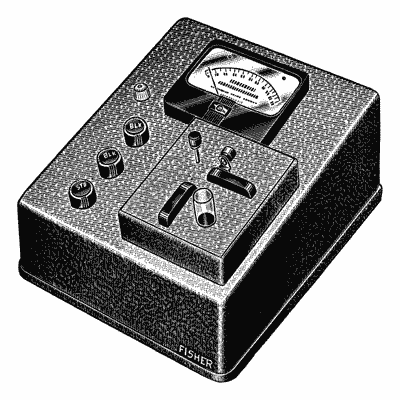Introduction
Fluorescence in medicine has enabled researchers to see the invisible.
In the 1950s the NIH's Dr. Robert Bowman developed a sensitive instrument-called the spectrophotofluorometer, or "SPF"-that allowed scientists to use fluorescence as a way to identify and measure tiny amounts of substances in the body. This scientific breakthrough, invented almost half a century ago, is still used today in AIDS research and the Human Genome Project.
Spectrophotofluorometer
Dr. Robert Bowman
History: Fluorescence to the Rescue (1941-1945)
A desperate call to scientists and doctors:
find a treatment for malaria!
The origins of the SPF lie in the antimalarial research of the 1940s. During World War II, the United States government issued a desperate call to scientists and doctors: find a treatment for malaria! Since Japan had taken over most of the world's supply of quinine-the best known treatment-Allied forces in the Pacific Theater needed a new drug, and fast.
Led by Dr. James Shannon, scientists at Goldwater Memorial Hospital in New York City and elsewhere tested thousands of drugs during the war. In many of the tests, doctors gave their subjects malarial fever, then injected the patients with a particular drug. They needed to make sure the drug reached the malarial parasites in the blood and learn how to adjust the dosages to avoid nasty side effects.
The National Heart Institute Laboratory chiefs in the 1960s includes several members of the Goldwater group who worked with Dr. James A. Shannon
The problem was that some candidate drugs did not fluoresce at the specific wavelengths available to them with their fluorometer, and therefore these drugs were undetectable in the plasma. The doctors could not use fluorescence as a way of "seeing," or measuring, these drugs in the body. There had been reports of fluorescence at other wavelengths, but at the time there were no commercially available sensitive UV fluorometers. Though they did come up with a treatment for malaria, the Goldwater scientists realized that their ideas reached beyond their tools. They needed a new type of instrument.
With an instrument called a fluorometer, they could measure how much of the drug was in a patient's plasma sample.
The Coleman filter fluorometer
The Move to the NIH (1949)
In 1949 Dr. James Shannon, leader of the antimalarial research effort at Goldwater, was named director of the laboratories and clinics of the newly created National Heart Institute (NHI) at the National Institutes of Health (NIH) in Bethesda, Maryland. He recruited researchers from Goldwater, including lab technician Julius Axelrod and Drs. Bernard Brodie, Sidney Udenfriend, Robert Berliner, and Robert Bowman. Because of their interest in fluorescence in medicine that originated with antimalarial drug research, one of the group's early projects was the development of a new instrument that could help them learn more about how fluorescence could be utilized in scientific research.
Dr. Robert Bowman of the Laboratory of Technical Development took the lead on the project in the early 1950s.
He was known for his talent in instrument-making, an indispensable skill in a research environment where scientists need good tools with which to test their theories and to lead them to new ideas.





